
In the beautiful and multi-faceted city of St. Petersburg, there are many interesting squares, a special place among which is occupied by three important historical squares: Dvortsovaya, Isaakievskaya and Senatskaya.
Palace, St. Isaac's and Senate Squares are the oldest and main squares of the city and are located in the heart of the northern capital, within walking distance from each other. Squares connects Alexander Garden, which is now one of the favorite places for walking and recreation in the center of St. Petersburg.
The history of these three squares is closely connected with the development of the city: the February and October Revolutions began here, vegetables were grown during the blockade, Hitler was going to celebrate the victory, and cats were hired at the Hermitage.
Today, the ensemble of three squares includes the main attractions and historical buildings of the center of St. Petersburg, such as: the Winter Palace (now the Hermitage), St. Isaac's Cathedral, the "Bronze Horseman", the General Staff building, the legendary Alexander Column and the Astoria Hotel.
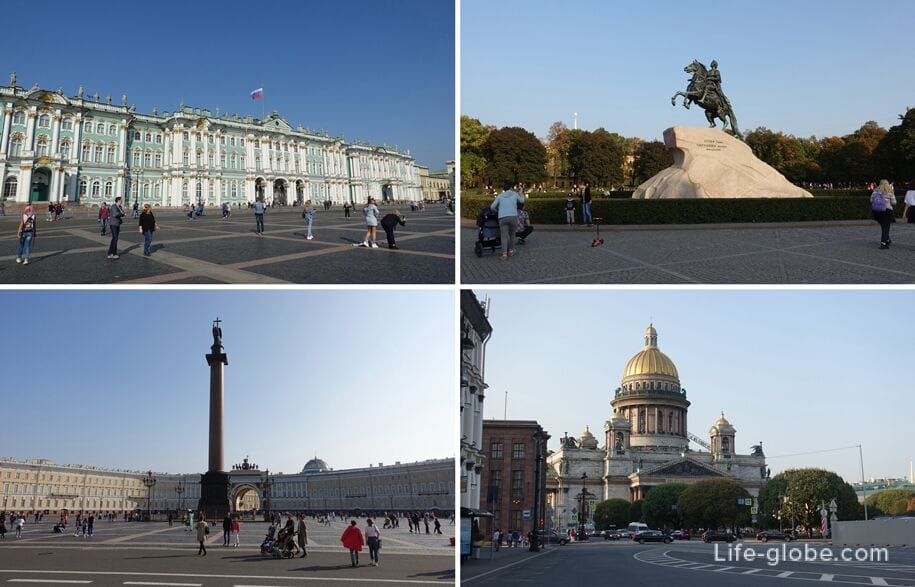
Palace Square is the main square and the heart of St. Petersburg, which is a place of recreation and various holidays and events, and on New Year's Eve, the main Christmas tree of the city is installed on the square.
The history of this place, as the origin of the square, originates together with the appearance of the Winter Palace. When in 1754, by order of the Empress Elizabeth Petrovna, the architect Francesco Bartolomeo Rastrelli planned not only the appearance of the palace itself, but also the idea arose to organize the space in front of the palace, thereby creating a square. Learn more about Palace Square…
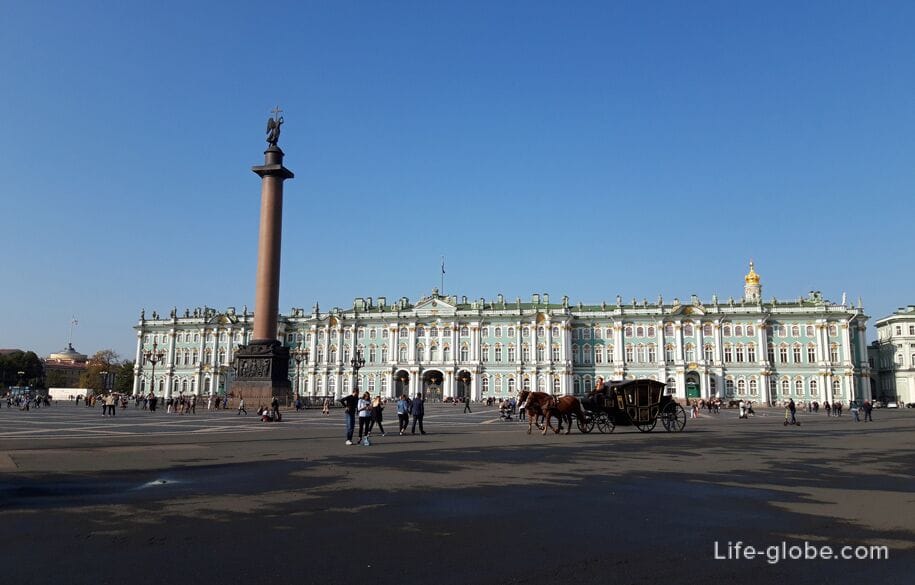

Main sights of the Palace Square:
- The Winter Palace is a former imperial residence and a striking monument of the Baroque style.
The current building of the Winter Palace was built in 1754-1762. For more than 150 years, the palace was the main ceremonial imperial residence of Russia.
Today, the Winter Palace is an outstanding architectural monument, and the main exposition of the State Hermitage Museum is located within its walls. Read more about the Winter Palace (Hermitage)…
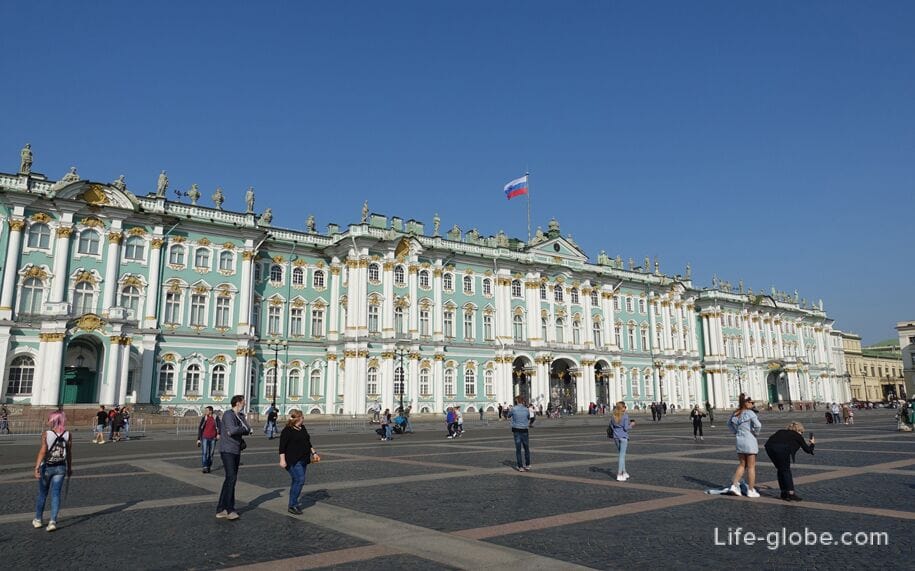

- The Alexander Column, which adorns the center of the Palace Square and is a legendary monument and one of the unspoken symbols of St. Petersburg.
The column was built in the period from 1829 to 1834, by decree of Emperor Nicholas I, in memory of his older brother Alexander I, who defeated Napoleon.
The author of the project was the famous architect of French origin Auguste Montferrand.
The column is mounted on a large pedestal-a monolith, on which bas-relief slabs are reinforced. The bas-reliefs in allegorical form glorify the victory of Russian weapons and symbolize the courage of the Russian army.
The column itself consists of a hewn solid monolith and has a height of 25.6 meters. At the very top of the column is the figure of an angel with a cross. More about the Alexander Column…

- the building of the General Staff, consisting of two buildings connected by a triumphal arch, crowned with the chariot of victory.
The building was built from 1819 to 1829, with the participation of architect Karl Ivanovich Rossi and sculptors S. S. Pimenov and V. I. Demut-Malinovsky.
The western part of the General Staff building now houses the command of the Western Military District of Russia. In the eastern part there are collections of the State Hermitage Museum.
The central part of the General Staff building is formed by the arch of the General Staff, which is a separate symbolic architectural object. The arch was built in 1826 as the main monument dedicated to the Patriotic War of 1812. The architect of the arch was Karl Rossi. Learn more about the building and the arches of the General Staff…
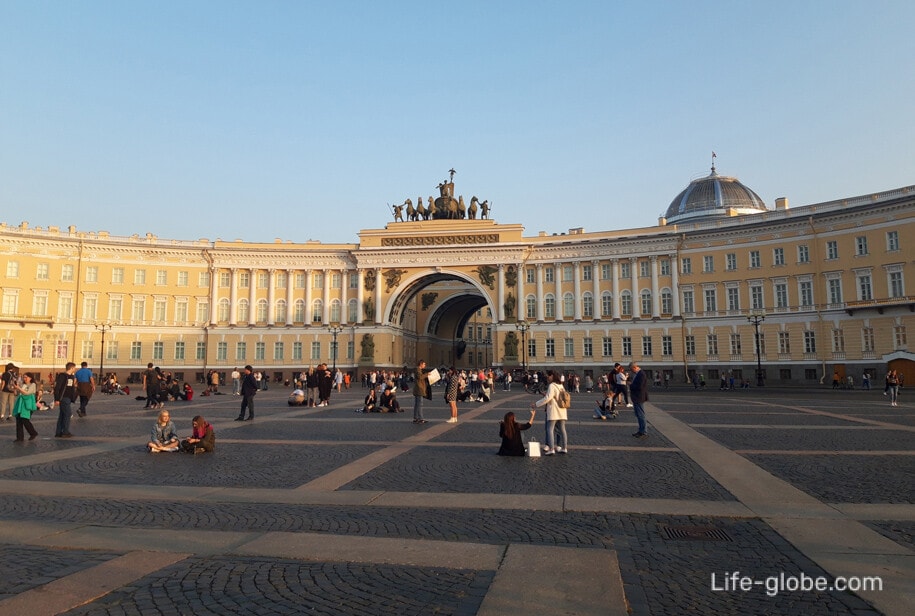
St. Isaac's Square or St. Isaac's Cathedral Square is not only one of the main squares of St. Petersburg, but it is also considered the main administrative square of the city.
The history of St. Isaac's Square dates back to the 18th century.
Subsequently, the appearance of the square changed, the square also changed its names and borders, new buildings were erected on the square. Learn more about St. Isaac's Square…
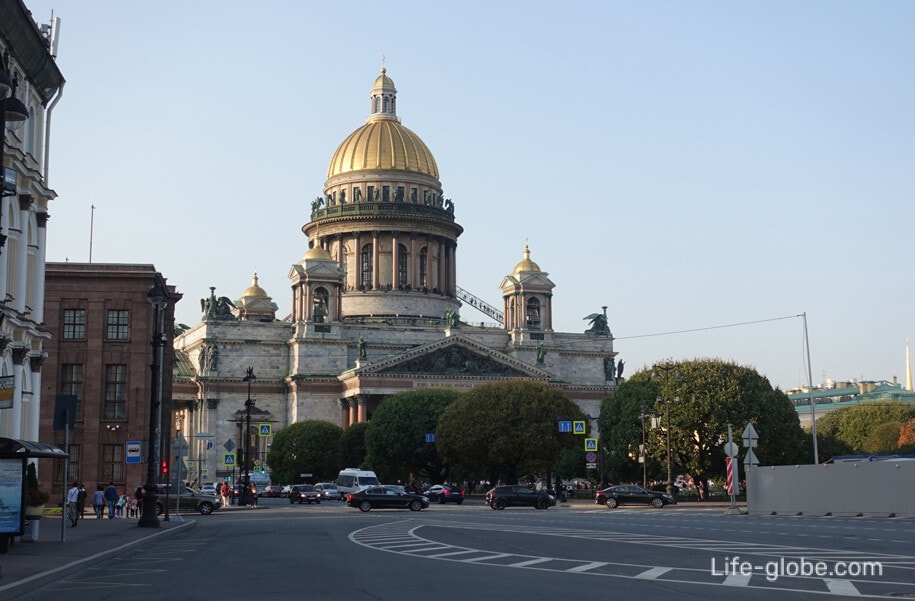
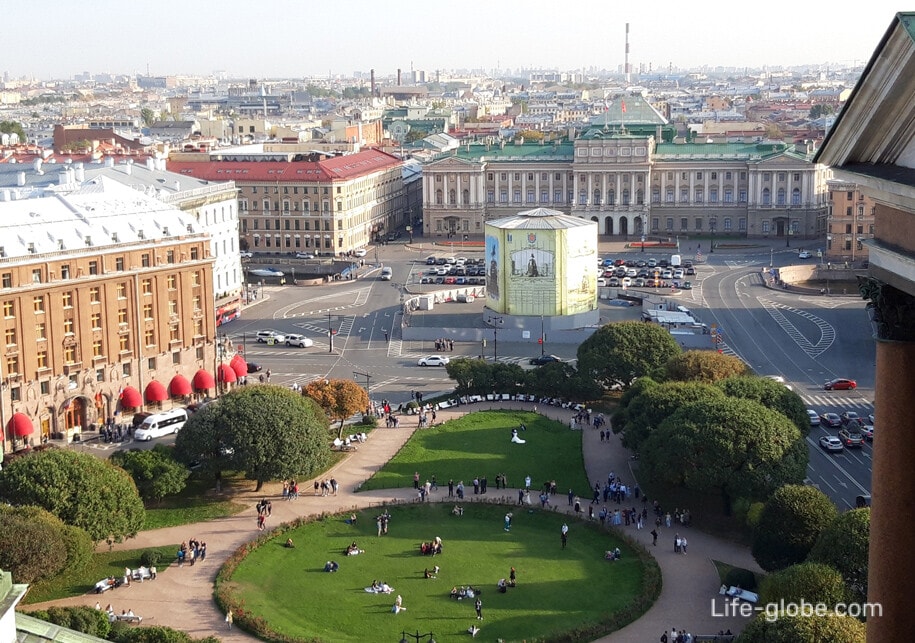
Main attractions of St. Isaac's Square:
- St. Isaac's Cathedral, which dominates the north side of the square.
The current St. Isaac's Cathedral is the fourth in the history of St. Petersburg (the first three have not been preserved). The cathedral was built from 1818 to 1858 by the French-born architect Auguste Montferrand.
The cathedral is designed in the style of late classicism and is an Orthodox church, also has the status of a museum. Services and concerts are held in the cathedral.
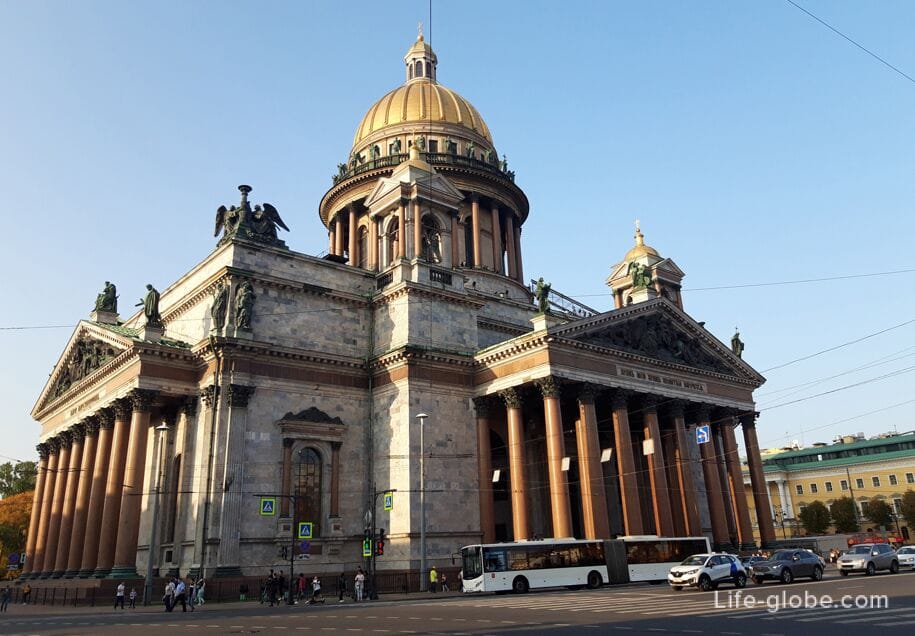
The interior of St. Isaac's Cathedral is designed in an eclectic style. It has richly decorated decoration, including mosaics, paintings and stone.
In the cathedral there are altars: the main one is dedicated to Isaac of Dalmatia, the other two-to the Great Martyr Catherine and the Blessed Alexander Nevsky. Read more about St. Isaac's Cathedral…
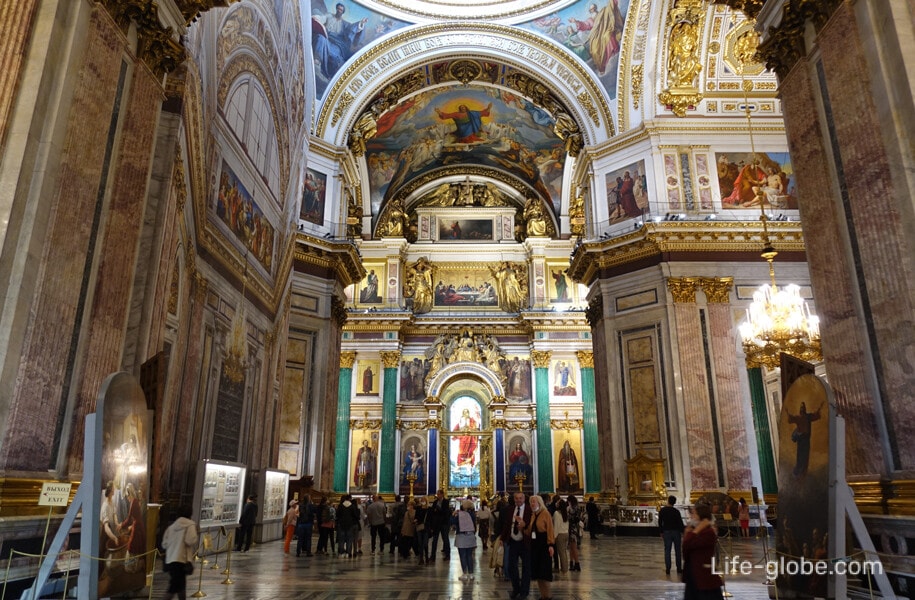
At a height of 43 meters, around the drum of the dome of St. Isaac's Cathedral, there is a colonnade consisting of 24 massive columns.
The drum has 12 giant windows, and on the open part of the colonnade there is a circular observation deck, giving beautiful 360-degree panoramic views of St. Petersburg, including the historical center and St. Isaac's Square itself. Learn more about the colonnade and observation deck…
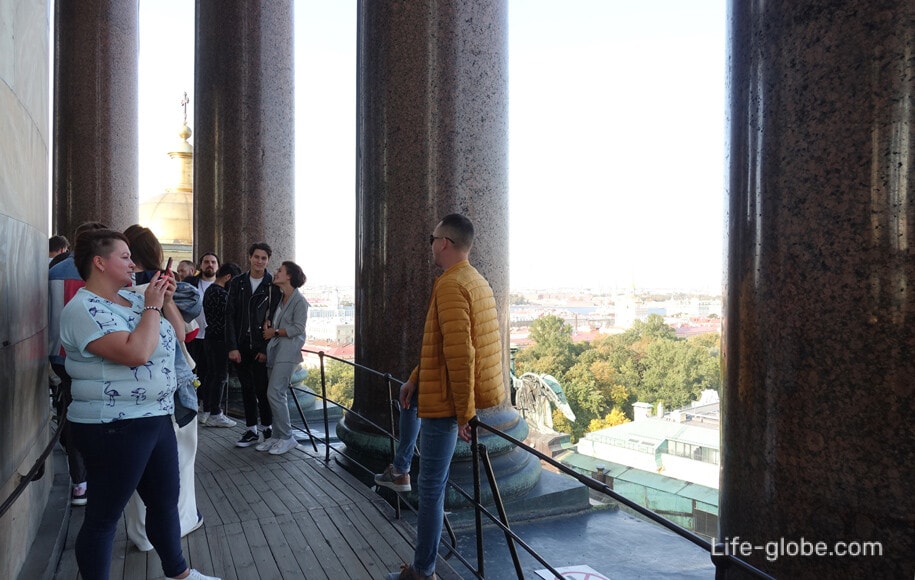
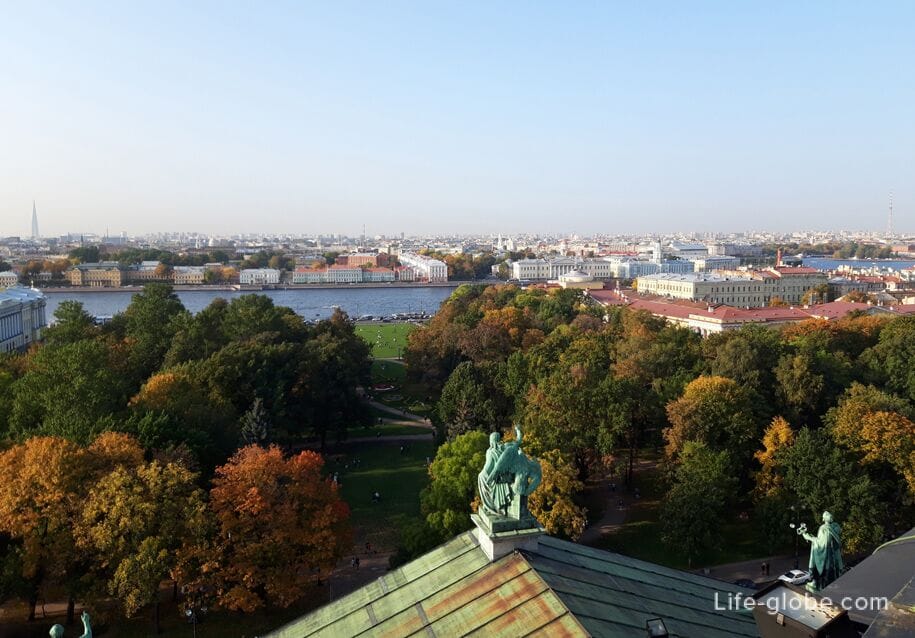

- St. Isaac's Square and the monument to Nicholas I, which are the center of the square.
St. Isaac's Square was created under the Emperor Alexander II. The opening of the square took place in July 1860.
Today, St. Isaac's Square is a holiday destination in the center of St. Petersburg. In the center of the square there is a lawn and a large round flower bed. In the square there are paths, there are places for recreation and lanterns are installed. Learn more about St. Isaac's Square…
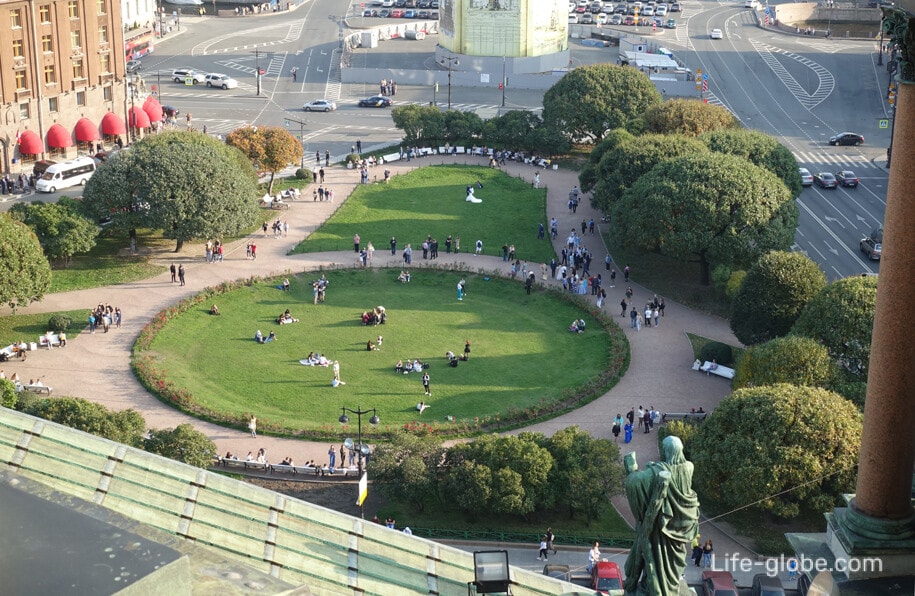
The Monument to Nicholas I is an equestrian monument built in 1856-1859 and erected in honor of the Russian Emperor Nicholas I.
The monument is an example of the neo-Baroque architectural style, and its authors were the architect Auguste Montferrand and the sculptor P. K. Klodt.
The equestrian statue of Nicholas I is set on a high pedestal of elliptical shape, decorated with female allegorical figures and four high reliefs, which reflect the main events during the reign of Nicholas I;
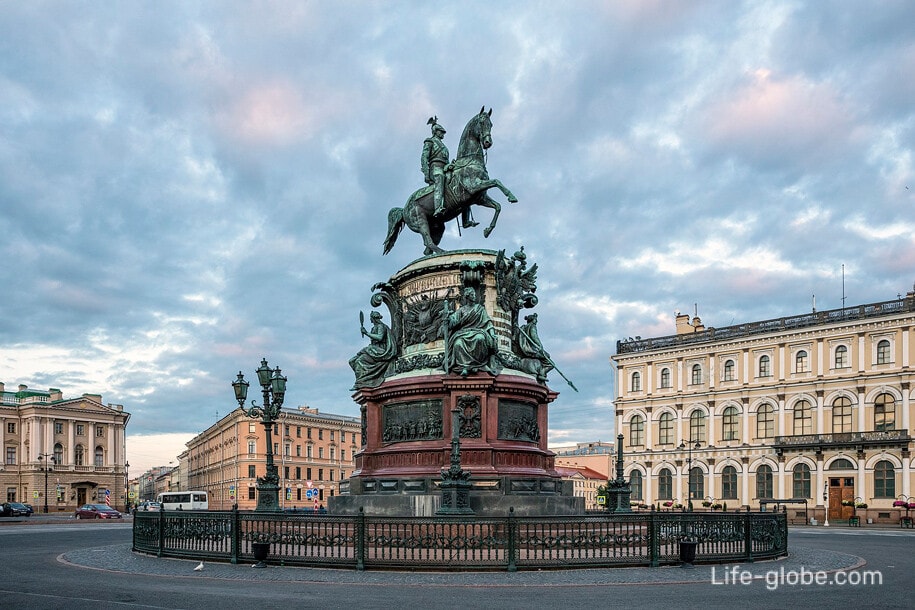
- The Mariinsky Palace, built in the first half of the 19th century by order of Nicholas I, for his daughter, Princess Maria, on the occasion of her wedding to the Duke of Leuchtenberg.
Today, the building of the former Mariinsky Palace is an architectural monument and attracts attention with its monumentality, subtly combined with the elegance of forms and the play of volumes.
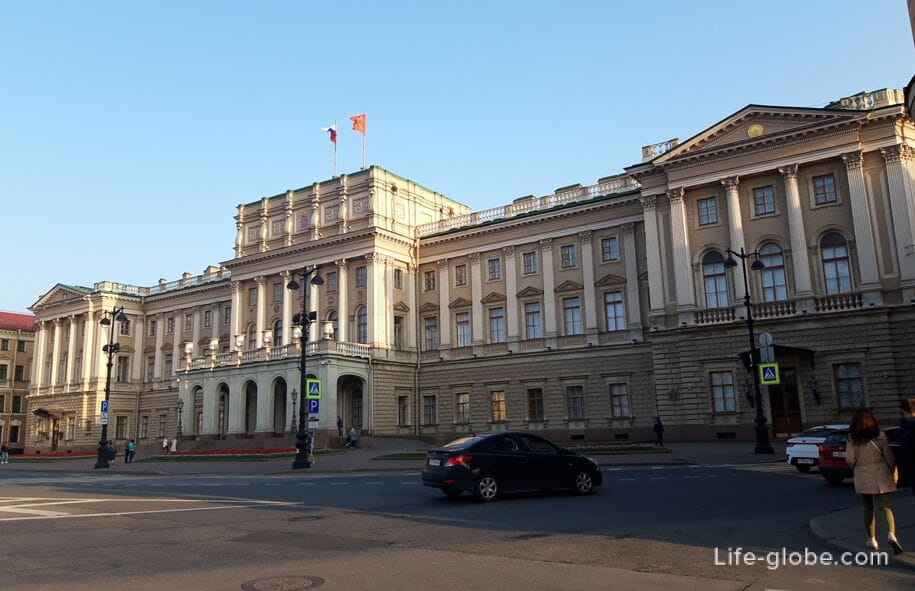
In contrast to the more strictly exterior, the interior of the Mariinsky Palace, which has changed quite a lot over the course of history, has a rich and impressive decoration. More about the Mariinsky Palace…
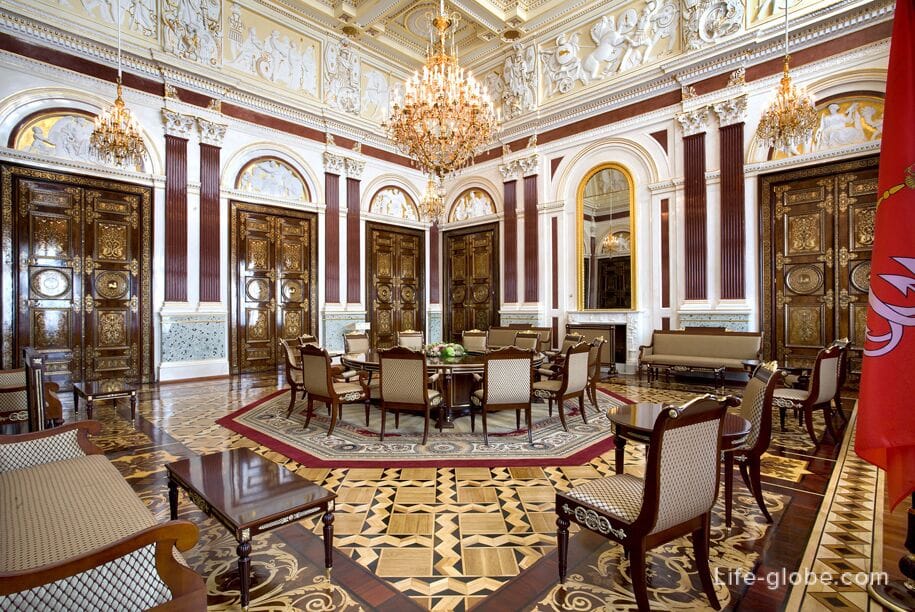
- the former house of Prince Lobanov-Rostovsky (the building of the War Ministry), built in 1817-1820 by Auguste Montferrand in the classical style, as a mansion for Prince Alexander Yakovlevich Lobanov-Rostovsky.
The sculptures on the facade of the building, including the legendary lions at the main entrance, were made by the Italian sculptor Paolo Triscorni.
Today, the 5-star Four Seasons Lion Palace Hotel is located within the walls of the house, with luxurious interiors in the Russian Empire style and restaurants with exclusive and refined cuisine.
The hotel also features a spa and wellness center, a swimming pool, a bar and family rooms. Link to the hotel
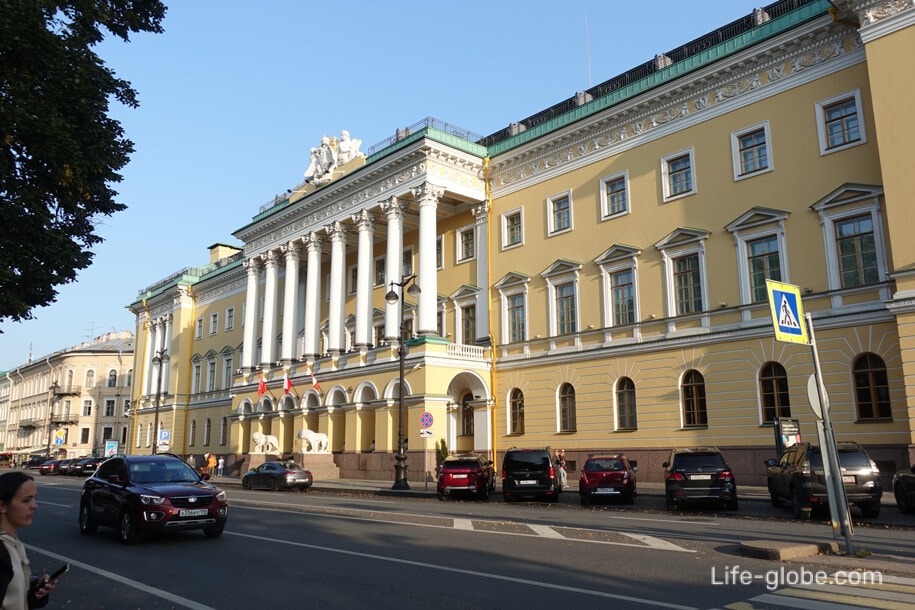
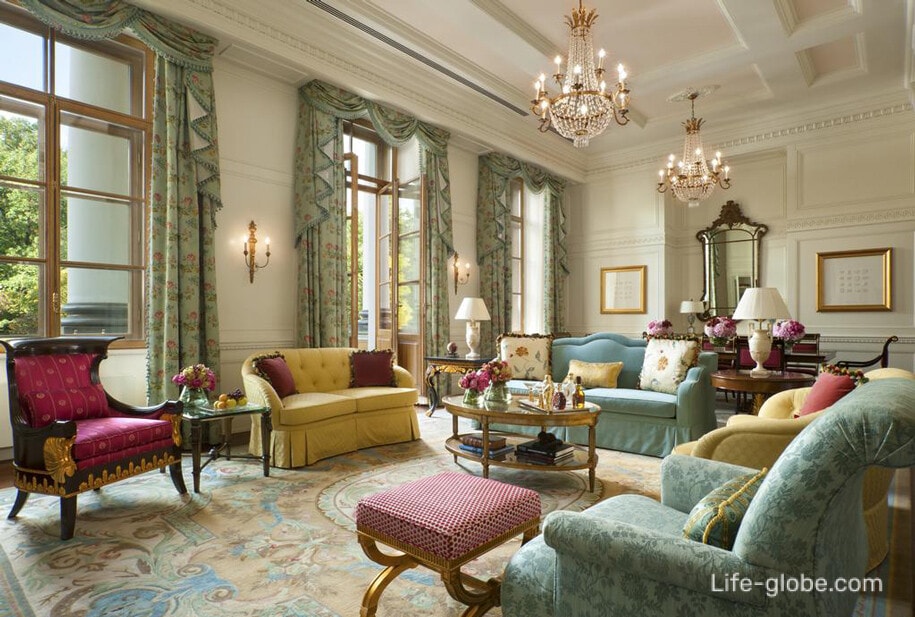
- 5-star hotel "Astoria", which from the very beginning of construction (the beginning of the 20th century) was built as a fashionable hotel and did not change its name.
Since its opening, the hotel has been popular with influential people and celebrities.
The hotel has a loungewith live music, a restaurant, a bar, free Wi-Fi, an ATM, a swimming pool, a gym, a spa center with a sauna and a Turkish bath.
The rooms are equipped with airconditioning, soundproofing, heating, a work desk, a flat-screen TV, a minibar, a safe, bathrobes and slippers, and a private bathroom with free toiletries.
A buffet breakfast can be included in the room rate. Link to the hotel
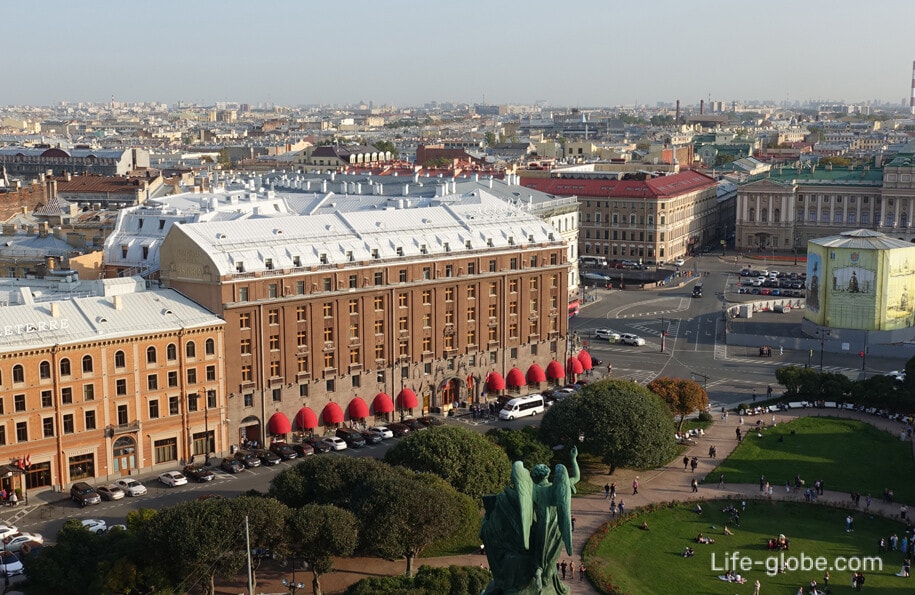
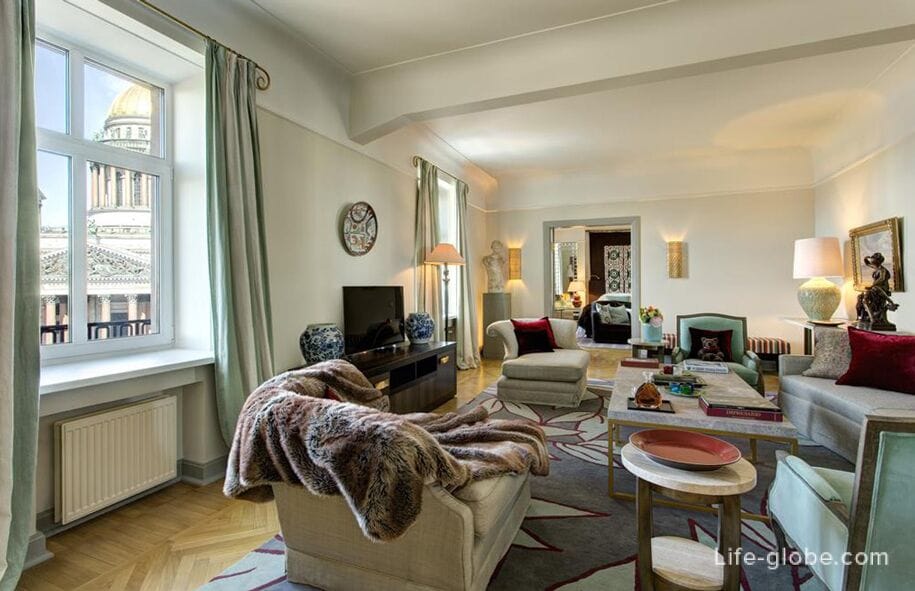
The formation of the Senate Square began with the history of the city, at the time when the Admiralty Shipyard was founded (the beginning of the 18th century) - then on the site of today's square was the glacis of the Admiralty, which was a small fortress structure.
In its modern appearance, the spacious and wide Senate Square combines a park area and some of the main attractions of St. Petersburg. More about the Senate Square…

Main sights of the Senate Square:
- "The Bronze Horseman" is an equestrian statue of Peter I, which adorns the center of the square and was created at the initiative of Catherine II by the French sculptor Etienne Maurice Falcone.
The grand opening of the monument took place on August 7 (August 18, new style), 1782.
The monument is set on a large pedestal-monolith - "Thunder-stone" and is made of bronze. It is a sculptural composition, which depicts Peter I, sitting on a rearing horse. Learn more about the Bronze Horseman…
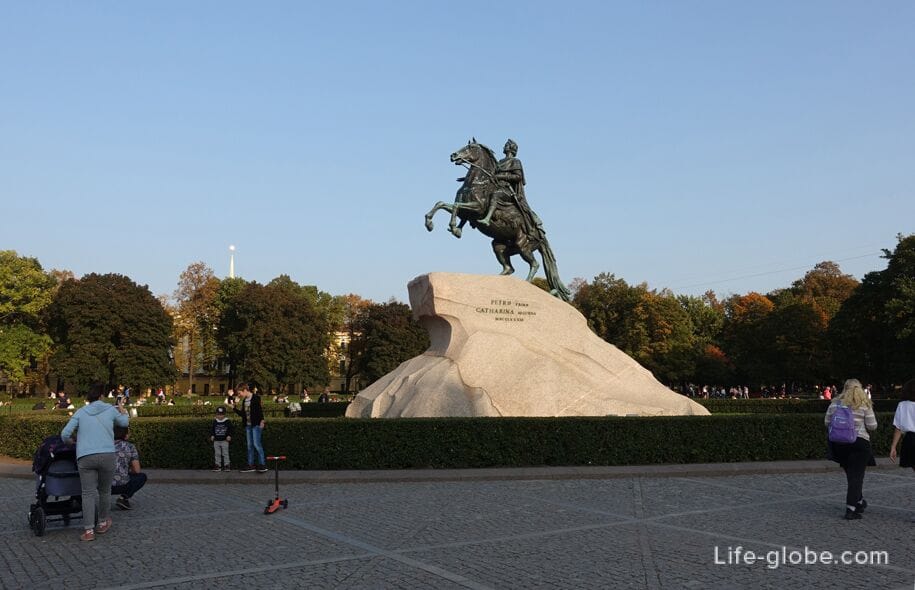
- the Admiralty buildinga, with the history of the creation of which the entire surrounding space, including the Senate Square, originates.
Today, the Admiralty building is a complex consisting of two U - shaped buildings-external and internal.
The side (eastern) facade of the Admiralty Building faces St. Isaac's Square. While the main one is the southern facade facing the Alexander Garden. Read more about the Admiralty building…
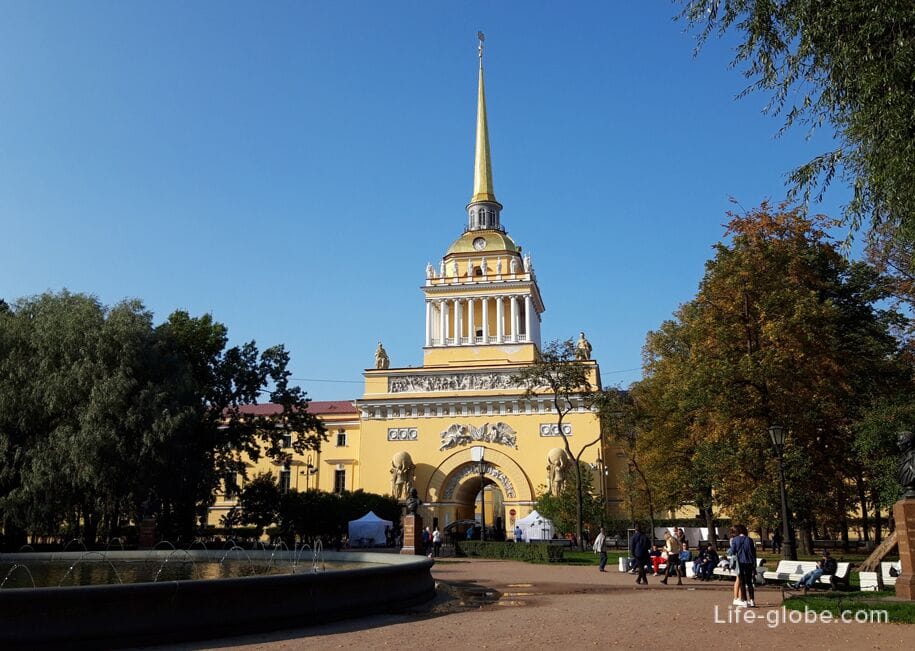
- the buildings of the Senate and the Synod, which today are an architectural ensemble of historical buildings in the style of late classicism.
Initially, the houses of the merchant's wife Kusovnikova and His Serene Highness Prince Menshikov stood on the site of the current buildings. In 1744, the Menshikov House was granted by Elizabeth I to the Chancellor A. P. Bestuzhev-Ryumin, for whom the building was rebuilt in the Baroque style.
In 1763, after the accession of Catherine II to the throne, the house of Bestuzhev-Ryumin passed to the treasury and the Senate moved to the building.
In honor of this building, in 1763, the square received its name - "Senatskaya".
The new buildings of the Senate and Synod were erected between 1829 and 1834 under the direction of architect Alexander Staubert, designed by Karl Rossi.
In the appearance of the complex of buildings, the triumphal arch stands out, which serves as a connection between the two buildings and is thrown over Galernaya Street. The arch has richly decorated stucco decoration, as well as arched windows, columns, and sculptures.
The main divisions of the Constitutional Court of the Russian Federation are located in one wing of the building. In the other (the former building of the Synod) - the Presidential Library named after Boris Yeltsin. Learn more about the Senate and Synod buildings…
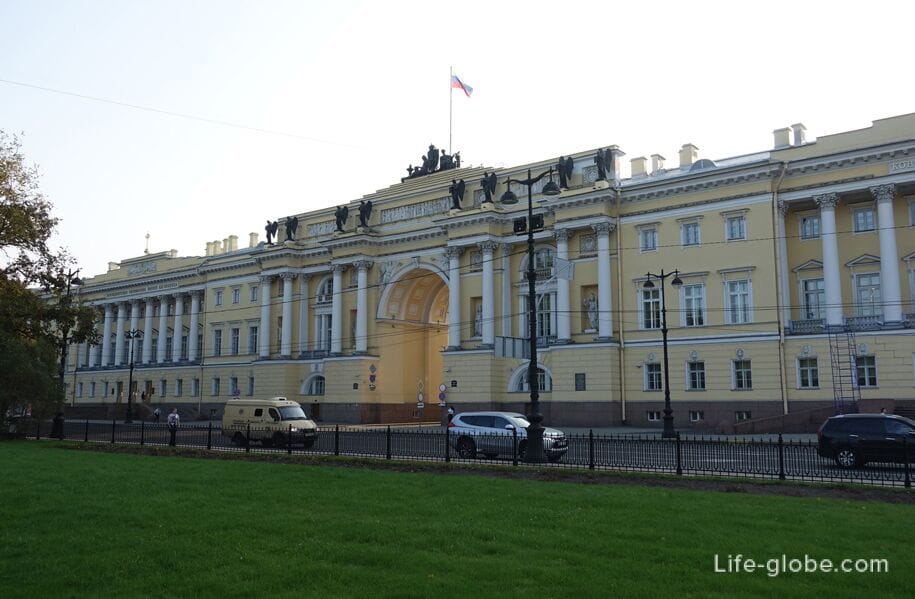
Nearest metro stations: "Admiralteiskaya", "Nevsky Prospekt", "Gostiny Dvor", "Spasskaya" and "Sennaya Ploshchad".
The three main squares of St. Petersburg can also be visited with one of the city tours
All accommodation facilities in St. Petersburg, including in the city center and near the squares, can be viewed and booked here